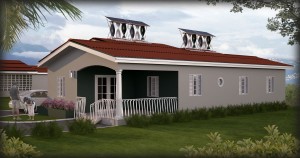I have no experience whatsoever with solar panels — or windmill, for that matter. But I wish that someone who DID have that experience would install one of these windmills then report back on it here in Brigada.
http://www.windstream-inc.com/my-solarmill
I believe you have to work with a local installer who has been certified.












Well, it’s been a lot of years since I was an active electrical power engineer but off hand I am intrigued by this rig. My first impression is that it is probably an excellent choice for certain unusual circumstances including a lot of off-the-grid situations.
For a grid connected situation there will be serious legal and regulatory issues in some jurisdictions just as there are with any grid connected backup or cogeneration system. And that’s why they require working through a licensed installer. A good installer with strong legal experience can deal with all those issues far better than a do-it-yourselfer working with a lawyer or architect.
I grew up in SW Kansas, next door to my Maternal grandparents. They had a windmill to pump water and still used that (late 50s-early 60s), but they had had a “wind charger” before electricity was available out on the plains. MANY of the farmers there had them. They worked fine as long as the wind blew (but in W. Kansas, that is quite reliable! )
Larry, a long-time Brigada participant wrote, “Well the plan for this item is the solar panels tilt to improve airflow through the wind turbines. Thus prevailing wind needs to be from away from best solar exposure, (wind from north in Northern Hemisphere reverse in southern). If the local prevailing and best winds come from say 90 degrees from best solar tilt angle only one wind turbine gets air flow.
Wind turbines work well, but power output goes up with cube of wind speed. So in general, higher is better as there is less ground friction to slow wind.
I have no doubt this work but in the renewable energy business advertised numbers on power production are very often out of reach in real world.
In the end, Bahamas Telecom didn’t deploy a test unit since maker told them the top survival wind speed was well below expected hurricane speeds and thus before a storm, personnel would have to go to each remote site and take down the wind turbines and likely the solar panels for them to survive a hurricane. Bahamas telecom wanted the units to supply backup power to support sites after a storm until commercial power was restored to remote islands so they decided getting personnel out to all the out islands before and after a storm was too much trouble.”